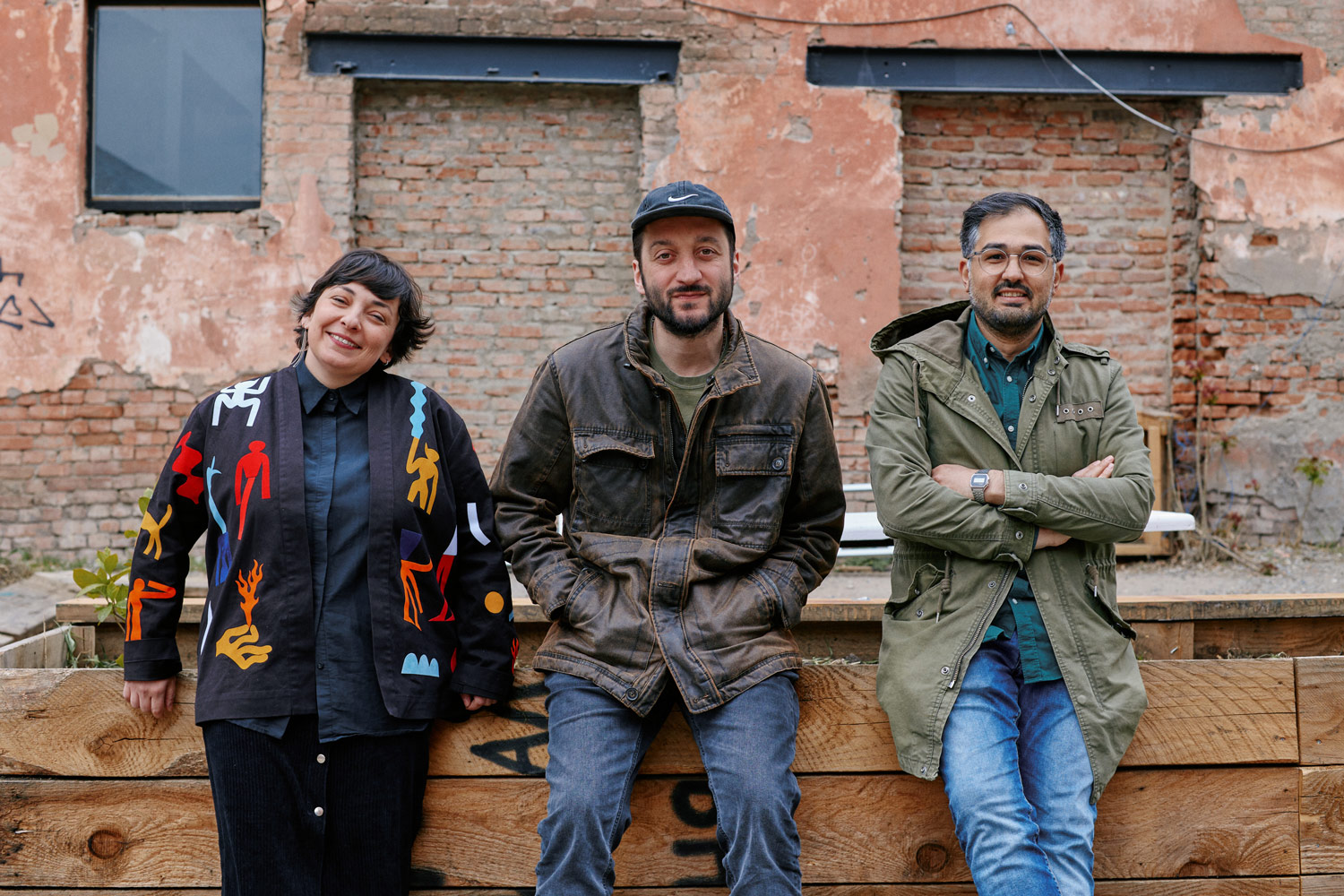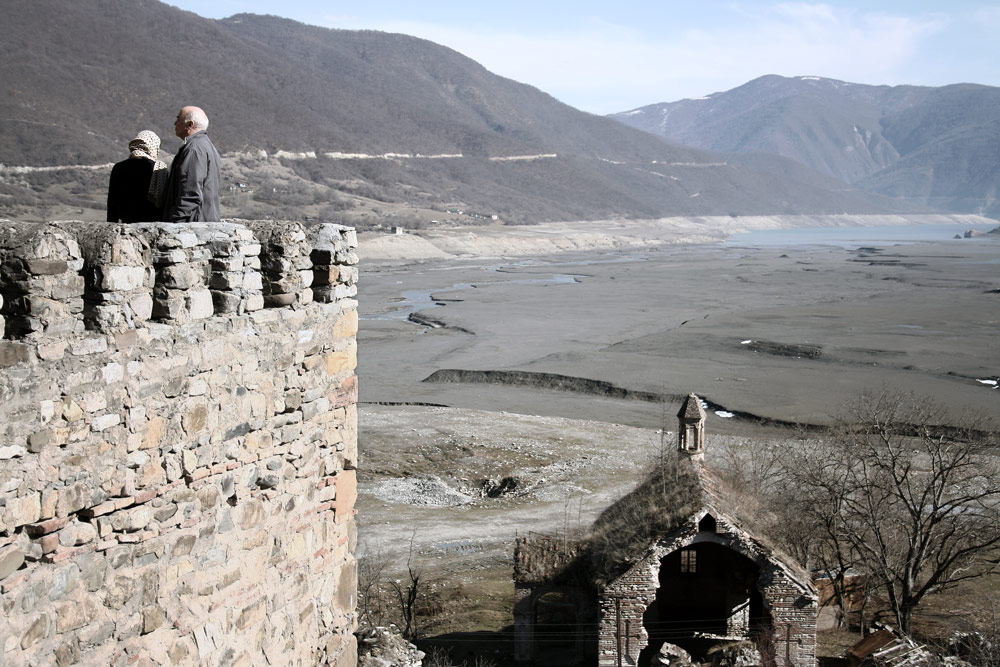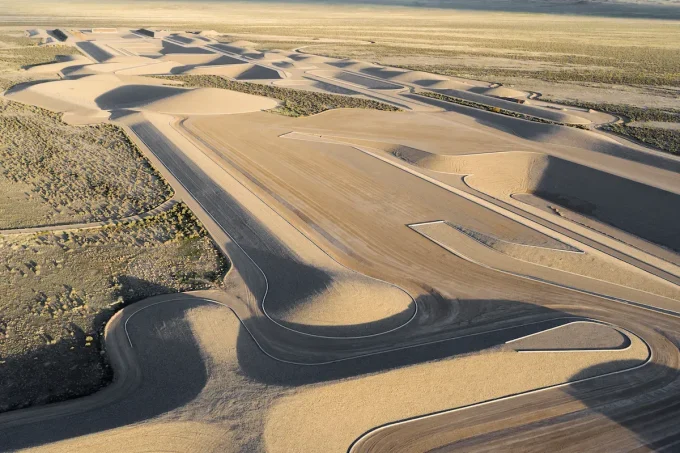The Georgian Pavilion at the Venice Architecture Biennale 2023 presents an exhibition called “January, February, March” curated by the Tbilisi Architecture Biennial. The exhibition is based on research about the impact of the hydroelectric power station in the Dusheti region of Georgia on the local ecosystem and settlements. It focuses on the creation and impact of reservoirs on ecological, urban, and demographic shifts in the age of rapid political transformations and climate change.
The exhibition explores the relationship between the flow of time and energy, human methods of consumption, distribution, and preservation, and energy politics. The exhibition asks questions about the temporary nature of our footprint on the environment, the determinants of order, and the costs of disrupting or creating a new order. The exhibition proposes an installation inspired by ancient remains and artifacts discovered during the research. The installation attempts to reconstruct the spatial memory of the area through one of its primitive archetypes and features rectangular building blocks made of sedimented river sludge material.
The exhibition space culminates in the sunken Jvaripatiosani basilica, offering a negative image of the church. The four rooms of the pavilion display the publications developed during the research, video art, and documentary materials.
Here is a conversation between three of the curators, Gigi Shukakidze, Otar Nemsadze, and Tinatin Gurgenidze, of the Georgian Pavilion at the Venice Architecture Biennale 2023, and Serra Utkum Ikiz of PA!
Serra Utkum Ikiz (PA): What inspired the Georgian Pavillions theme “January, February, March” and how they chose the artificially altered settlement in the Dusheti region of Georgia as the focus of their installation?
Gigi Shukakidze, Otar Nemsadze, and Tinatin Gurgenidze: The theme for the Georgian Pavilion at the 18th International Architecture Exhibition – La Biennale di Venezia, was inspired by the main resource of the country – water, its use, methods of its consumption, distribution, and preservation. During the research phase, the artificially altered settlement was chosen as a focus of the installation, demonstrating the existing transformed landscape of the area and revealing the remains of the cultural heritage that has sunken underwater, appearing during the months of January, February, and March when the water level is low in the reservoir.
Serra (PA): How does the Georgian Pavilion explore the impacts of rapid political transformations and climate change on water reservoirs, and what message do they hope to convey about the importance of preserving and managing these vital resources?
Gigi, Otar, and Tinatin (TAB): We focused the research on energy politics and rivers as a common resource for people in the age of rapid political transformations and climate change. Therefore, together with experts in various fields, their analyses, and personal experiences, we created a book that intends to demonstrate the historical reality of our country by observing the river flows. The texts of scientists and researchers make the most critical questions heard and discuss the historical, political, geographical, environmental, economic, ethical, and social aspects of the exploitation of hydrocarbon resources. The publication aims to envision the futures simultaneously created by the intersection of technological progress, climate change, political will, and traditional society.
Serra (PA): What materials and structures were used to construct the Georgian Pavilion, and how do they contribute to the overall message and design of the installation?
Gigi, Otar, and Tinatin (TAB): The installation created with the existing river sludge in the area of the Zhinvali reservoir attempts to reconstruct the spatial memory of the dam area through primitive archetypes of a city, a house, a church… The intersection of living and lifeless landscapes – formed around the dried-up rivers – metaphorically connects to a sunken abstract form composed of sedimented sludge material. The river sludge is blended into rectangular building blocks, covering almost the entire exhibition space. The arrangement of these blocks culminates in the room center, shaping the interior of the basilica—a negative image of the church—emptiness as a mass, interpreting Jvarpatiosani insides.
Serra (PA): How does the Georgian Pavilion’s exploration of the relationship between time, energy, and the environment build upon this theme, and what do they hope to achieve through their intervention in the 2023 Venice Architecture Biennale? Additionally, how might the themes and ideas presented in the exhibition be applied in the future, both within the Georgian context and beyond, to promote sustainable development and address the challenges of climate change and rapid political transformation?
Gigi, Otar, and Tinatin (TAB): Our aim is to begin in the distant past and finally speculate on the future created by the intersection of technological progress, climate change, political will, and traditional society, to see the actual cost of “development” and recognize the various systems generating changes in our past and present by building water reservoirs or large hydroelectric plants. Above all, this book is our statement on the importance of the commonality of water. Water should not be a commodity for a few; instead, it should be considered a shared resource, which belongs to everyone and should be governed by collective democratic principles.
We encourage you to stay tuned to ParametricArchitecture for detailed updates on the Venice Architecture Biennale 2023.






















Leave a comment